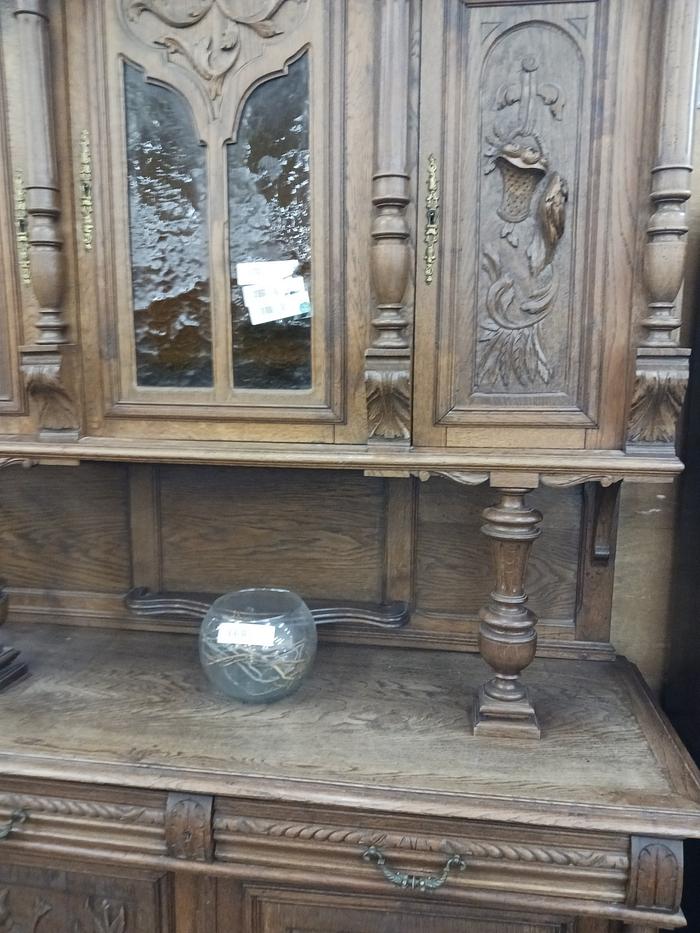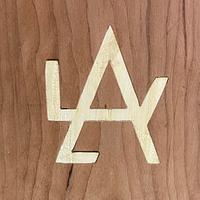Share your craft projects
Make new craft buddies
Ask craft questions
Blog your craft journey

Dark_Lightning
2704 posts
and
28 followers
in over 11 years
in over 11 years
Antique Buffet
OK, not really sure where to put this, but I picked reviews. Certainly not a manufacturer's problem, 100+ years removed? Decide for yourselves...
A cautionary tale-
When I was removing the scored/faded finish on the top of the base of the French Country Buffet (made circa 1880) I got for a song at the ReStore, I ended up with a really bad reaction to the finish or the wood, I’m not sure which. It was bad enough that I almost went to the ER for the breathing problems and a painful rash on all exposed surfaces- complete head and neck, and both arms and hands. My eyes were swelled shut enough so that I had to stagger into the bathroom to rinse them so that I could even see. I was up to 90% of both my asthma meds. I got a local medical appointment and I’m currently on serious steroids (60 mg of Prednisone per day) and am feeling better. I’m experiencing less breathing difficulty and most of the skin irritation has diminished. Given the way my exterior skin looked, I’m pretty concerned about my lingering cough. I’ve never experienced this kind of reaction, beyond a little skin irritation from a project I made from some blood wood, many years ago- which I never used again. I was trained in HazMat back in the early ‘90s, and know better for known poisons. But dust? At least I know remediation techniques, and have cleaned it up properly. Not done, yet. I wasn’t using a dust mask, either, because I was expecting those filter bags on both my ROS to do the dust collection. Yup, dumb. Those ROS have yet to be cleaned. Can’t depend on those filter bags, right? They will be rinsed with water out in the street.
A cautionary tale-
When I was removing the scored/faded finish on the top of the base of the French Country Buffet (made circa 1880) I got for a song at the ReStore, I ended up with a really bad reaction to the finish or the wood, I’m not sure which. It was bad enough that I almost went to the ER for the breathing problems and a painful rash on all exposed surfaces- complete head and neck, and both arms and hands. My eyes were swelled shut enough so that I had to stagger into the bathroom to rinse them so that I could even see. I was up to 90% of both my asthma meds. I got a local medical appointment and I’m currently on serious steroids (60 mg of Prednisone per day) and am feeling better. I’m experiencing less breathing difficulty and most of the skin irritation has diminished. Given the way my exterior skin looked, I’m pretty concerned about my lingering cough. I’ve never experienced this kind of reaction, beyond a little skin irritation from a project I made from some blood wood, many years ago- which I never used again. I was trained in HazMat back in the early ‘90s, and know better for known poisons. But dust? At least I know remediation techniques, and have cleaned it up properly. Not done, yet. I wasn’t using a dust mask, either, because I was expecting those filter bags on both my ROS to do the dust collection. Yup, dumb. Those ROS have yet to be cleaned. Can’t depend on those filter bags, right? They will be rinsed with water out in the street.
OK, questions-
1. What kind of finish chemicals may have been used in that time period?
2. What kind of stains may have been used in those days?
I really feel for the workers of that era, having to potentially suffer through these exposures.
The Other Steven
4 Comments
Have you tried using denatured alcohol to strip the finish? If the finish comes off easily with alcohol, it very likely has a shellac top coat at least. Nitrocellulose lacquer is the other common top coat finish. Alcohol will sometimes dissolve it slowly but lacquer thinner will remove it and shellac very easily. You can see a list of ingredients in lacquer here. Castor oil stands out as an ingredient that could cause an issue I suppose but I do not know if it all evaporates or stays as a component in the final finish. The resins used in lacquer might be worth some additional research related to toxicity and reactions.
Have you ever had a reaction to pine? I have heard of people suddenly developing an allergy to pine. I think that a lot of varnishes were made with a pine resin, also known as rosin or pitch. They may have been dissolved or carried in turpentine which is also derived from pine.
Edit to add: Are you allergic to bee stings? Bee's wax was another common finish at one time but I would doubt that was the primary finish on your piece.
Unlikely on your piece but Urushi from Japan is a finish derived from a plant related to poison ivy. I can imagine that sanding it could require caution?
Have you ever had a reaction to pine? I have heard of people suddenly developing an allergy to pine. I think that a lot of varnishes were made with a pine resin, also known as rosin or pitch. They may have been dissolved or carried in turpentine which is also derived from pine.
Edit to add: Are you allergic to bee stings? Bee's wax was another common finish at one time but I would doubt that was the primary finish on your piece.
Unlikely on your piece but Urushi from Japan is a finish derived from a plant related to poison ivy. I can imagine that sanding it could require caution?
--Nathan, TX. Hire the lazy man. He may not do as much work but that's because he will find a better way.
Thanks for the info! I've not had reactions like this before, using shellac or lacquer. I only wanted to grind the top surface, and don't usually use solvents to strip finishes. Yep, I'm allergic to bee stings. Last time I got stung (58 years ago, that could be worse now?) my hand swelled up so big I couldn't move it! Didn't have breathing problems, though. Pine doesn't seem to bother me beyond a nuisance dust level. I may be insensitive to poison ivy. I tangled with it once, and washed within 10 minutes, but never noticed any rash. That was probably not long enough for serious effects, though. Castor oil strikes me as a likely culprit, given your information. Next time I work on an old piece of furniture I'm wearing a moon suit! 😁
The Other Steven
My daughter has recently started reacting to Burts Bees lip balm. Her lips swell up like a Kardashian when she uses it now. I wonder if somewhere a long the way there was some bees wax applied? Using some denatured alcohol may remove it but if it is finished with shellac and maybe even lacquer, it may remove that as well.
I have refinished several mid century modern pieces which are generally finished with a dyed lacquer. The finish was in really bad shape on some of them and because the veneer on them is usually pretty thin, it is risky sanding the finish off so I use lacquer thinner with an abrasive pad to strip off the old finish, followed by a light sanding to get any bad spots and raised grain. It is usually less work than sanding off an old finish. Lacquer thinner is smelly stuff so work outside or at least use a VOC rated respirator.
I have refinished several mid century modern pieces which are generally finished with a dyed lacquer. The finish was in really bad shape on some of them and because the veneer on them is usually pretty thin, it is risky sanding the finish off so I use lacquer thinner with an abrasive pad to strip off the old finish, followed by a light sanding to get any bad spots and raised grain. It is usually less work than sanding off an old finish. Lacquer thinner is smelly stuff so work outside or at least use a VOC rated respirator.
--Nathan, TX. Hire the lazy man. He may not do as much work but that's because he will find a better way.
I had to take out some gouges. But I'll probably dissolve the finish if I do a piece like this again. Then I'll grind. The veneer on this was pretty thick, but I went through in a little spot. It stained OK, and I'll just call it "old". I really hope I'm not allergic to oak, I just dropped a whole bunch of money on some to replace that top if it didn't come out satisfactorily. I'd have to use acetone; it's tough to find lacquer thinner in my area.
The Other Steven










